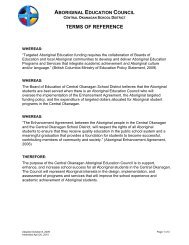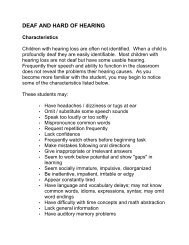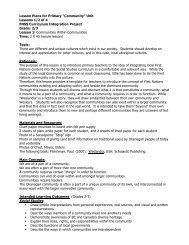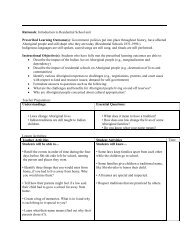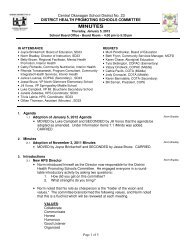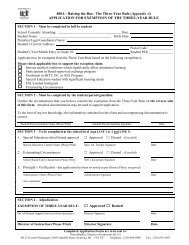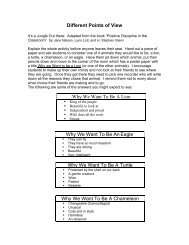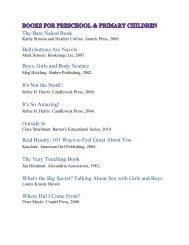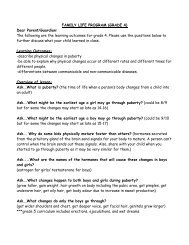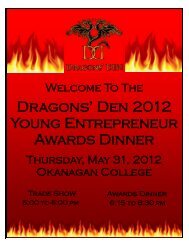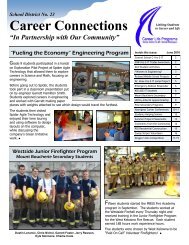Reading and Writing with Your Child, Kindergarten to Grade 6, A ...
Reading and Writing with Your Child, Kindergarten to Grade 6, A ...
Reading and Writing with Your Child, Kindergarten to Grade 6, A ...
You also want an ePaper? Increase the reach of your titles
YUMPU automatically turns print PDFs into web optimized ePapers that Google loves.
Four Top Literacy Tips for Parents<br />
Four Top Literacy Tips for Parents<br />
TIP FOUR MAKE IT FUN, MAKE IT MATTER<br />
…make [reading] fun. It shouldn’t be like homework. Make<br />
reading entertaining – make funny sounds <strong>and</strong> act it out<br />
<strong>to</strong>gether – kids really like that!<br />
Cracking the Code<br />
When children enjoy reading, they read a lot. And in reading a lot, they become good<br />
readers. They also read <strong>to</strong> underst<strong>and</strong> things <strong>and</strong> <strong>to</strong> learn more about themselves <strong>and</strong><br />
the world. (Or maybe they’re motivated <strong>to</strong> read up on that video game they’re stuck on!)<br />
They don’t get bogged down by the mechanics of language because they have cracked its<br />
code. At that moment, a whole new world opens up for your child.<br />
Choose what you’re going <strong>to</strong> read <strong>to</strong>gether:<br />
• Look online for ideas, perhaps based on themes that interest your child.<br />
• Make a trip <strong>to</strong> the library or books<strong>to</strong>re <strong>to</strong> browse for titles.<br />
Choose all kinds of books, all kinds of reading material:<br />
Robert Munsch, 2005<br />
“A Moment <strong>with</strong> Munsch”<br />
• All kinds of non-fiction – perhaps early reader books about Canada or other places in<br />
the world, wild animals or dinosaurs<br />
• Books or articles that contain positive or powerful ideas about the world<br />
• All kinds of fiction – action, fantasy, science fiction, funny s<strong>to</strong>ries<br />
• S<strong>to</strong>ries that reflect how they see themselves: adventurer, hero, princess, animal lover<br />
(early veterinarian in the making!), detective, caregiver <strong>and</strong> more<br />
• Books in a series (children like <strong>to</strong> identify <strong>with</strong> familiar characters)<br />
• Newspapers, magazines, e-subscriptions<br />
• Comic books <strong>and</strong> graphic novels, car<strong>to</strong>ons, jokes, baseball cards, game scores,<br />
brain teasers<br />
• Song lyrics or scripts that appeal <strong>to</strong> their musical <strong>and</strong> artistic tastes<br />
Make the s<strong>to</strong>ry come alive:<br />
• Use different voices for different characters in a s<strong>to</strong>ry.<br />
• Use your child’s name instead of a character’s name whenever it appears in the s<strong>to</strong>ry.<br />
• Compare characters in the s<strong>to</strong>ry <strong>with</strong> people you both know. Talk about what they have<br />
in common <strong>with</strong> real people.<br />
• Make puppets <strong>and</strong> use them <strong>to</strong> act out the s<strong>to</strong>ry.<br />
• Encourage your child <strong>to</strong> draw or paint characters <strong>and</strong> scenarios. Talk about the idea that<br />
“every picture tells a s<strong>to</strong>ry.”<br />
• Reread your child’s favourite s<strong>to</strong>ries as many times as your child wants <strong>to</strong> hear them.<br />
Make it relevant:<br />
• Help your child underst<strong>and</strong> that most s<strong>to</strong>ries express a particular point of view or<br />
perspective. (You could talk about how the s<strong>to</strong>ry would change if one of the other<br />
characters was telling it.)<br />
• Check for respect <strong>and</strong> social <strong>and</strong> cultural fairness in the s<strong>to</strong>ry. Are characters in the<br />
s<strong>to</strong>ry represented fairly?<br />
• Talk about why the author might have written the s<strong>to</strong>ry, especially if the s<strong>to</strong>ry conveys<br />
a social message.<br />
• Explore different opinions about things going on in the world by looking at letters <strong>to</strong><br />
the edi<strong>to</strong>r, edi<strong>to</strong>rials <strong>and</strong> columns in the newspaper.<br />
16 17<br />
<strong>Reading</strong> <strong>and</strong> <strong>Writing</strong> <strong>with</strong> <strong>Your</strong> <strong>Child</strong>, <strong>Kindergarten</strong> <strong>to</strong> <strong>Grade</strong> 6: A Parent Guide<br />
<strong>Reading</strong> <strong>and</strong> <strong>Writing</strong> <strong>with</strong> <strong>Your</strong> <strong>Child</strong>, <strong>Kindergarten</strong> <strong>to</strong> <strong>Grade</strong> 6: A Parent Guide



